The Giant Cichlid, scientifically known as Boulengerochromis microlepis, is a fascinating species of fish that has garnered significant attention among aquarium enthusiasts and researchers alike. This article delves into various aspects of the Giant Cichlid, including its scientific information, habitat, diet, behavior, and interesting facts.
Table of Contents
The Giant Cichlid belongs to the family Cichlidae and is the only member of its genus and tribe, Boulengerochromis and Boulengerochromini respectively. It was originally described as Tilapia microlepis by George Albert Boulenger in 1899, but was later reclassified into its current genus by Jacques Pellegrin in 1904.
The Giant Cichlid is also known as the Emperor Cichlid. It is endemic to Lake Tanganyika, where it is a relatively common species found in coastal areas to depths of 100 meters. This species is part of a unique group of cichlids that are endemic to Lake Tanganyika, with over 300 species cohabiting in the lake’s littoral habitats.
The Giant Cichlid is primarily a bottom-dweller, often found near the lake’s bottom. It is a carnivorous species, with adults being chiefly piscivorous while juveniles are omnivores. The species is known to dig into the sand and transform its environment, making it a territorial and somewhat aggressive fish.
Giant Cichlids are known for their territorial behavior and are not tolerant of other territorial species. Dominant males are particularly virulent and can provoke intense and violent fights with other males, leading to the submission or even death of one of the protagonists. They are diurnal and live in small pelagic foraging groups when not spawning.
Interesting Facts
- Largest African Cichlid: The Giant Cichlid is the largest African cichlid, with males reaching up to 90 cm in length and females up to 75 cm.
- Unique Breeding Behavior: This species is oviparous and spawns on exposed substrates.
- Conservation Status: Despite being listed as Least Concern (LC) on the IUCN Red List, the Giant Cichlid is facing threats due to overfishing and habitat degradation, particularly in the Congolese shores of Lake Tanganyika.
Fun Facts
- Aquarium Challenges: Due to its large size and specific habitat requirements, the Giant Cichlid is not suitable for most home aquariums. It requires a minimum tank size of 3000 liters and specific water parameters to thrive.
- Dietary Preferences: In the wild, Giant Cichlids feed on fish and other aquatic animals. In captivity, they require a diet rich in protein, including live or frozen foods like brine shrimp and bloodworms.
The Giant Cichlid has been a subject of interest for both researchers and aquarium hobbyists for decades. Its unique characteristics and behaviors have made it a popular species for study and observation. Research projects, such as the one by the Rufford Foundation, aim to collect ecological data to strengthen conservation efforts for this and other littoral cichlid species in Lake Tanganyika.
The Giant Cichlid is an interesting species due to its impressive size, unique territorial behavior, and specific habitat requirements. Its role as a top predator in Lake Tanganyika’s ecosystem makes it a crucial species for maintaining the ecological balance of the lake. The challenges in keeping this species in captivity add to its allure, making it a fascinating subject for both researchers and dedicated aquarium enthusiasts.
A study on the phylogeography of Lake Tanganyika’s giant cichlid highlights the genetic diversity of this species and its ecological significance in the lake’s ecosystem. This research underscores the importance of conservation efforts to protect this and other endemic species in Lake Tanganyika.
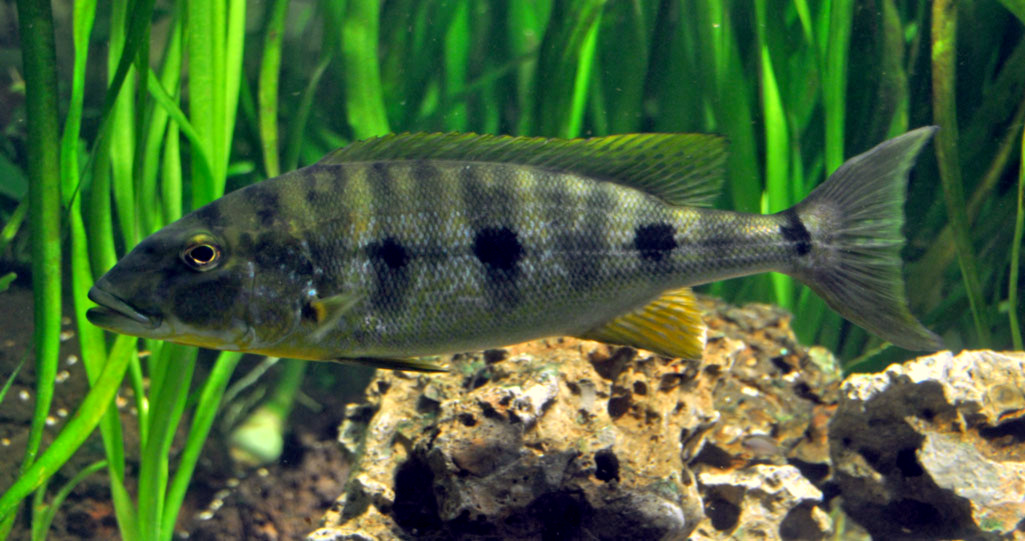
Giant Cichlid Key Information
It is the largest African cichlid, reaching up to 90 cm in length. The species is known for its unique color patterns, which can vary significantly among individuals. In the wild, they inhabit near-shore surface waters of Lake Tanganyika, where they are found in a variety of habitats, from shallow waters to depths of up to 150 meters. Their diet consists mainly of fish and other aquatic animals, making them a top predator in their ecosystem. In captivity, they require a large tank with specific water parameters and a diet rich in protein. Due to their aggressive and territorial nature, they are best kept with large, peaceful species and avoided with small fish or other territorial cichlids.
| Family | Cichlidae |
| Origin | Lake Tanganyika |
| Price | High |
| Common Names | Giant Cichlid, Emperor Cichlid |
| Variants | None |
| Ideal Tank Size | 3000 liters or more |
| Water Parameters | pH 9.0 – ?, dH 10 – ?, Temperature 24°C – 26°C |
| Lifespan | Up to 10 years |
| Full Size | Up to 90 cm |
| Natural Environment | Freshwater, pelagic |
| Behavior | Territorial, aggressive |
| Habitat Preference | Near-shore surface waters |
| Aquarium Decoration | Large rocks, sandy substrate |
| Ideal Tank Mates | Large, peaceful species |
| Fish to Avoid | Small fish, territorial species |
| Best Foods/Diet | Live or frozen foods, high protein |
| Disease | Prone to diseases if water quality is poor |
| Sex-Switch | No known sex-switching behavior |
| Gender Differences | Males larger than females |
| Care Level | High |
| Breeding Level | High |
Ideal Tankmates for Giant Cichlid
When choosing tank mates for the Giant Cichlid, it’s essential to consider their compatibility, size, and temperament. The Giant Cichlid is a large, aggressive, and territorial species that requires a spacious tank with plenty of hiding places and visual barriers. Here are ten ideal tank mates that can coexist with the Giant Cichlid:
The key to selecting compatible tank mates is to choose species that are similar in size, temperament, and water requirements. The tank mates should be large enough not to be seen as prey, and their behavior should not be too aggressive or competitive.
Red Tail Shark
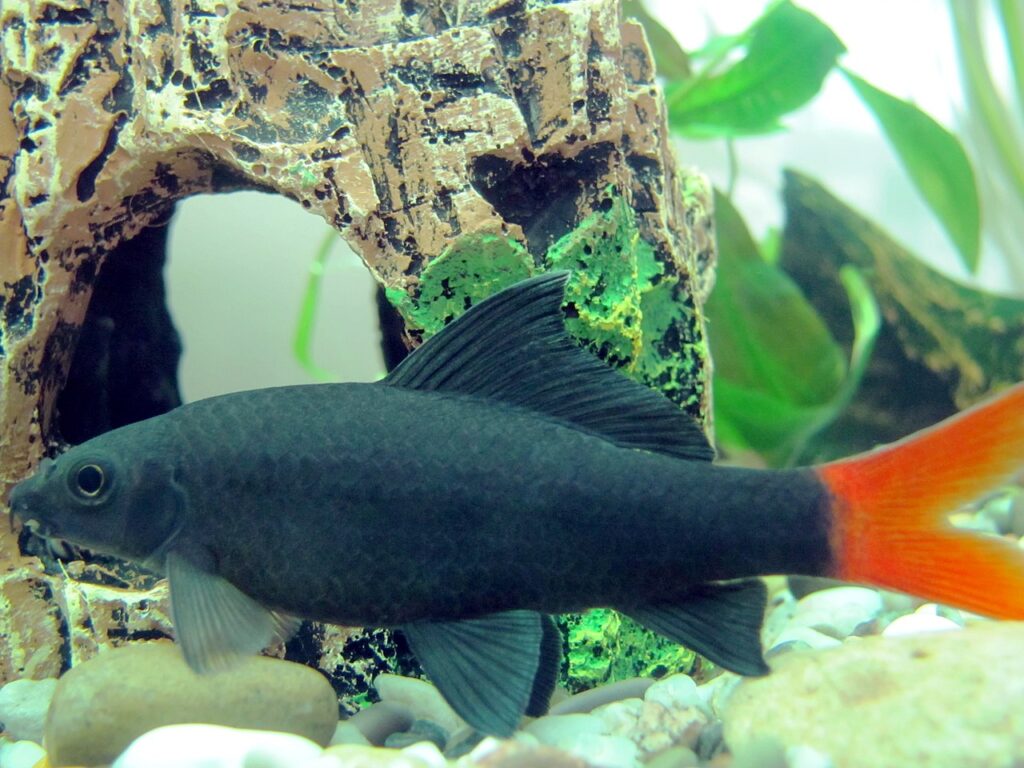
The Red Tail Shark is a large, peaceful species that can grow up to 6 inches in length. Its calm nature makes it an ideal tank mate for the Giant Cichlid.
| Common/Market Names | Price Range | Care Level | Behavior | Life Span | Max Size |
|---|---|---|---|---|---|
| Red Tail Shark, Red Tail Black Shark | $10-$20 | Easy | Peaceful | 5-7 years | 6 inches |
Giant Danio
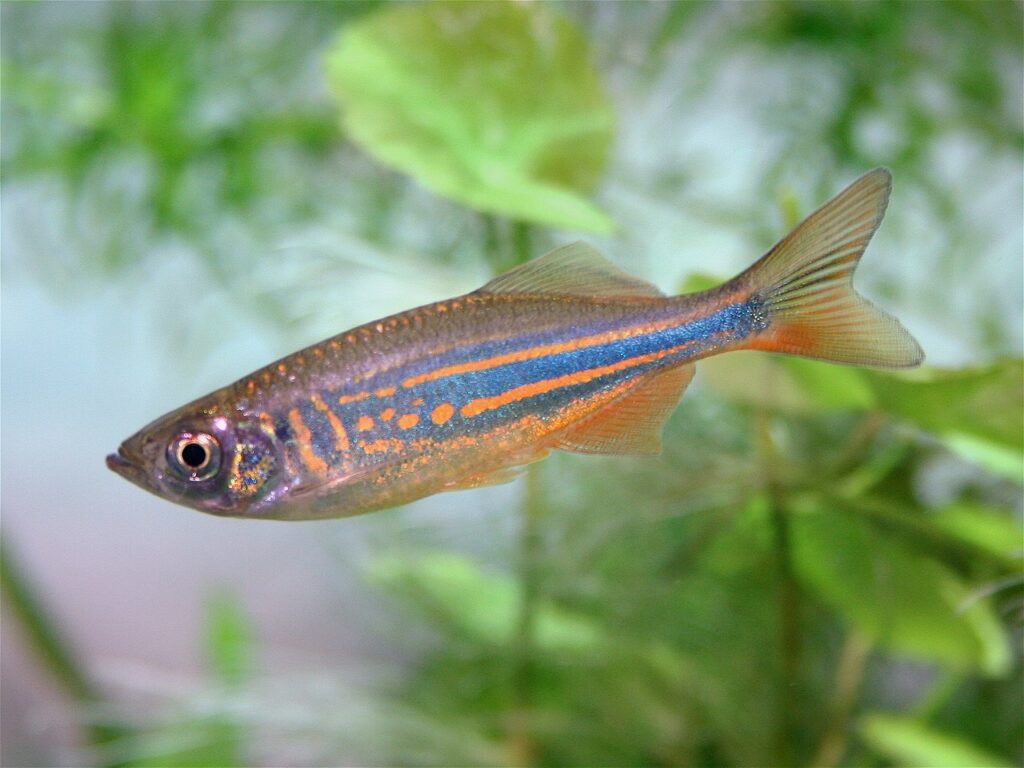
The Giant Danio is a large, active species that can grow up to 4 inches in length. Its fast-swimming nature makes it difficult for the Giant Cichlid to catch.
| Common/Market Names | Price Range | Care Level | Behavior | Life Span | Max Size |
|---|---|---|---|---|---|
| Giant Danio, Danio aequipinnatus | $5-$10 | Easy | Active | 5-7 years | 4 inches |
Pleco
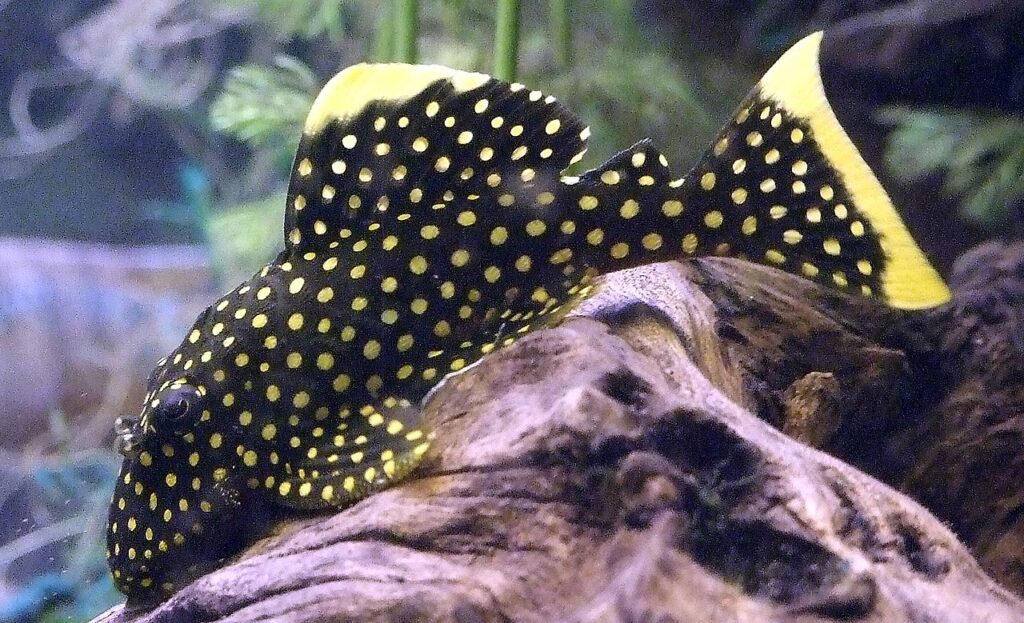
The Pleco is a large, armored species that can grow up to 24 inches in length. Its calm nature and armored body make it an ideal tank mate for the Giant Cichlid.
| Common/Market Names | Price Range | Care Level | Behavior | Life Span | Max Size |
|---|---|---|---|---|---|
| Pleco, Hypostomus plecostomus | $20-$50 | Easy | Peaceful | 10-15 years | 24 inches |
Chocolate Cichlid
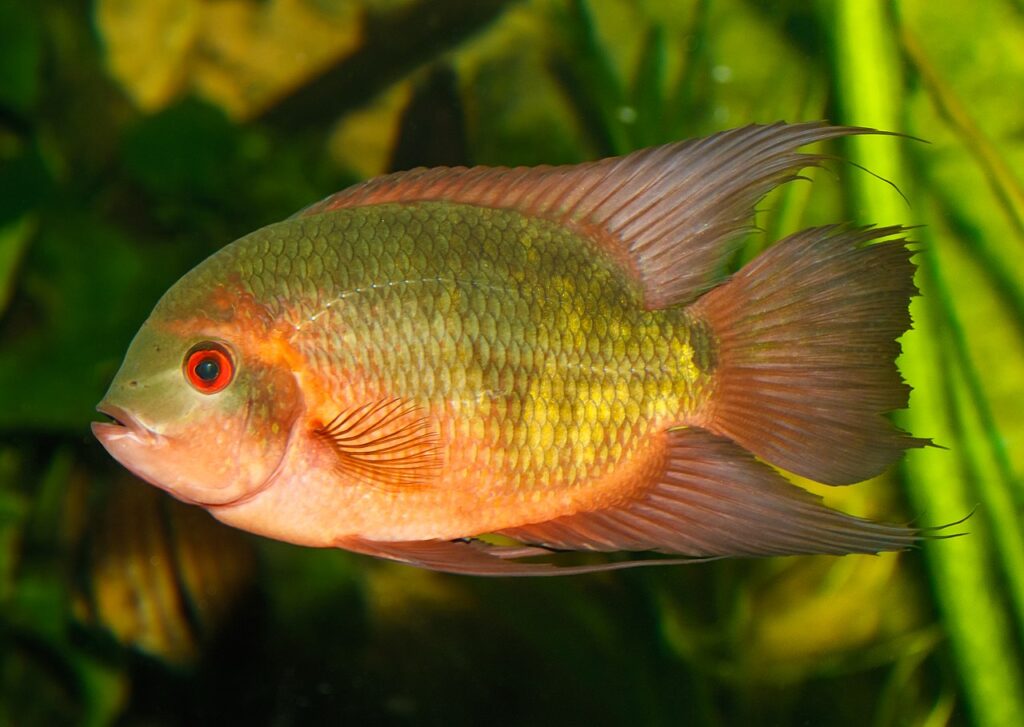
The Chocolate Cichlid is a large, peaceful species that can grow up to 6 inches in length. Its calm nature and similar water requirements make it an ideal tank mate for the Giant Cichlid.
| Common/Market Names | Price Range | Care Level | Behavior | Life Span | Max Size |
|---|---|---|---|---|---|
| Chocolate Cichlid, Hypselecara temporalis | $15-$30 | Easy | Peaceful | 5-7 years | 6 inches |
Oscar
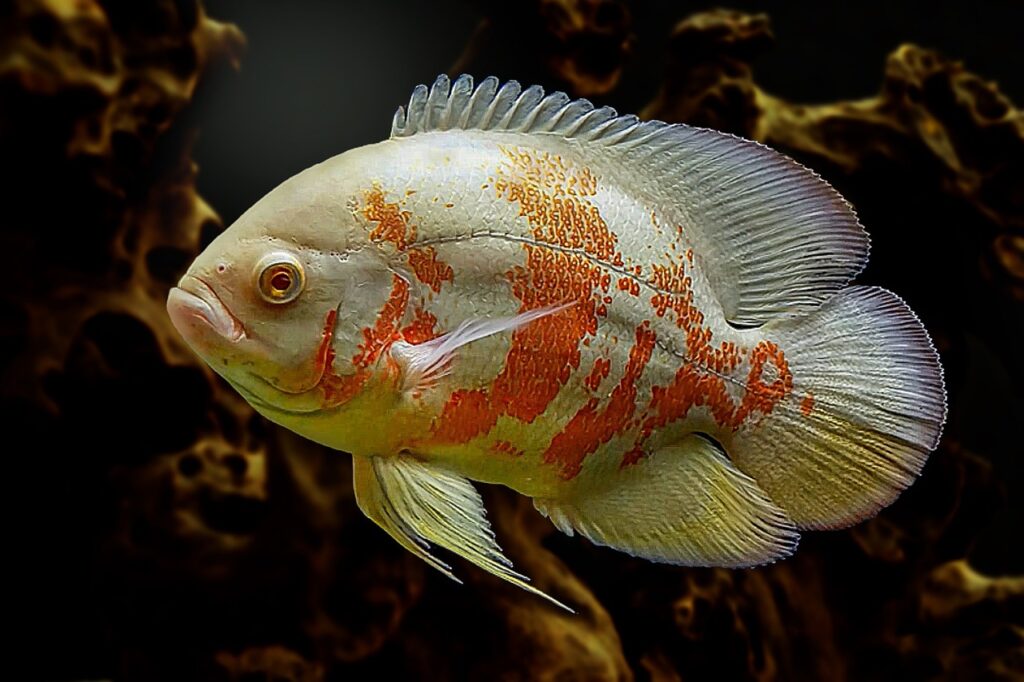
The Oscar is a large, peaceful species that can grow up to 12 inches in length. Its calm nature and similar water requirements make it an ideal tank mate for the Giant Cichlid.
| Common/Market Names | Price Range | Care Level | Behavior | Life Span | Max Size |
|---|---|---|---|---|---|
| Oscar, Astronotus ocellatus | $20-$40 | Easy | Peaceful | 10-15 years | 12 inches |
Wallaroo
The Wallaroo is a large, peaceful species that can grow up to 6 inches in length. Its calm nature and unique appearance make it an ideal tank mate for the Giant Cichlid.
| Common/Market Names | Price Range | Care Level | Behavior | Life Span | Max Size |
|---|---|---|---|---|---|
| Wallaroo, Macropesotheta australis | $15-$30 | Easy | Peaceful | 5-7 years | 6 inches |
Frontosa
The Frontosa is a large, peaceful species that can grow up to 12 inches in length. Its calm nature and similar water requirements make it an ideal tank mate for the Giant Cichlid.
| Common/Market Names | Price Range | Care Level | Behavior | Life Span | Max Size |
|---|---|---|---|---|---|
| Frontosa, Cyphotilapia frontosa | $20-$40 | Easy | Peaceful | 10-15 years | 12 inches |
Mpimbwe Frontosa
The Mpimbwe Frontosa is a large, peaceful species that can grow up to 12 inches in length. Its calm nature and similar water requirements make it an ideal tank mate for the Giant Cichlid.
| Common/Market Names | Price Range | Care Level | Behavior | Life Span | Max Size |
|---|---|---|---|---|---|
| Mpimbwe Frontosa, Cyphotilapia frontosa | $20-$40 | Easy | Peaceful | 10-15 years | 12 inches |
Paratilapia
The Paratilapia is a large, peaceful species that can grow up to 12 inches in length. Its calm nature and similar water requirements make it an ideal tank mate for the Giant Cichlid.
| Common/Market Names | Price Range | Care Level | Behavior | Life Span | Max Size |
|---|---|---|---|---|---|
| Paratilapia, Paratilapia polleni | $20-$40 | Easy | Peaceful | 10-15 years | 12 inches |
Red Terror
The Red Terror is a large, semi-aggressive species that can grow up to 12 inches in length. Its bold nature and similar water requirements make it an ideal tank mate for the Giant Cichlid.
| Common/Market Names | Price Range | Care Level | Behavior | Life Span | Max Size |
|---|---|---|---|---|---|
| Red Terror, Cichlasoma festae | $20-$40 | Medium | Semi-aggressive | 10-15 years | 12 inches |
FAQs about Giant Cichlid
How do Giant Cichlids interact with each other in a community tank?
Giant Cichlids are known for their territorial behavior and can be quite aggressive towards each other. In a community tank, they may engage in ritualized aggression, such as lip-locking and chasing, which can be part of their courtship or territorial defense. It is essential to provide a large tank with plenty of hiding places and visual barriers to reduce aggression[4].
What is the significance of mouthbrooding in Giant Cichlids?
Mouthbrooding is a unique behavior where the female Giant Cichlid holds the eggs in her mouth for extended periods. This behavior is crucial for protecting the eggs from predators and ensuring their survival. It is a common trait among many cichlid species, including the Giant Cichlid[2].
How do Giant Cichlids contribute to the ecosystem in Lake Tanganyika?
Giant Cichlids play a significant role in maintaining the ecological balance of Lake Tanganyika. As top predators, they help control the population of smaller fish and other aquatic animals, ensuring that no single species dominates the ecosystem[2].
What are the specific dietary needs of Giant Cichlids?
Giant Cichlids are carnivorous and require a diet rich in protein. They feed on fish and other aquatic animals in the wild. In captivity, they should be fed live or frozen foods such as brine shrimp, bloodworms, and daphnia to meet their nutritional needs[5].
How can I ensure the health and well-being of my Giant Cichlid?
To ensure the health and well-being of your Giant Cichlid, it is crucial to maintain good water quality. Regularly test water parameters and perform partial water changes to keep the tank clean. A balanced diet and a spacious tank with appropriate decorations will also contribute to their overall health[5].
What are some common health issues in Giant Cichlids?
Giant Cichlids are prone to diseases if water quality is poor. Regular monitoring of water parameters and performing regular water changes can help prevent health issues. Additionally, ensuring a balanced diet and providing a stress-free environment can help maintain their health[5].
How do Giant Cichlids breed in captivity?
Giant Cichlids are oviparous and spawn on exposed substrates. Breeding them in captivity requires a large tank with appropriate water parameters and a suitable substrate for spawning. The male and female will engage in a complex courtship ritual before spawning, and the female will lay eggs on a flat surface[3].
What are the gender differences in Giant Cichlids?
Males are larger than females and have more vibrant coloration. Males also exhibit more aggressive behavior, especially during breeding. Females are generally smaller and less aggressive, focusing more on brood care[3].
How can I sex my Giant Cichlid?
Sexing Giant Cichlids can be challenging, but males are typically larger and have more vibrant coloration. Males also exhibit more aggressive behavior, especially during breeding. Females are generally smaller and less aggressive, focusing more on brood care[3].
What are the ideal tank mates for Giant Cichlids?
Ideal tank mates for Giant Cichlids should be large, peaceful species that do not compete for food or territory. Species like the Red Tail Shark, Giant Danio, and Pleco are suitable tank mates due to their calm nature and similar water requirements[1].
How can I create a suitable environment for my Giant Cichlid?
Creating a suitable environment for your Giant Cichlid involves providing a large tank with plenty of hiding places and visual barriers. Use large rocks and sandy substrate to mimic their natural habitat. Maintain stable water parameters and ensure the tank is not overcrowded to reduce stress and aggression[1].
Leave a Reply